While to the modern eye Pawtuckaway may be primarily a mecca of outdoor recreation, the land has seen many users, many eras, and many natural phenomena that have shaped it into such. The park has a long history, from prehuman to Native influence, and if you take the time you can see for yourself some of the tucked away evidence of Pawtuckaway’s past.
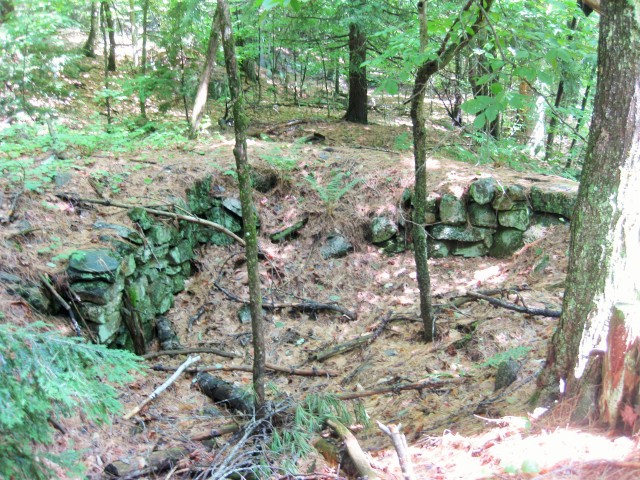
Now let’s hop in that time machine and explore the area about 275 million years ago. Take a look at that Pawtuckaway trail map (I know we all carry one around, at least I do). The elevation lines in the Pawtuckaway Mountain area form a circular ring, which is the outline of an ancient volcanic ring dyke!
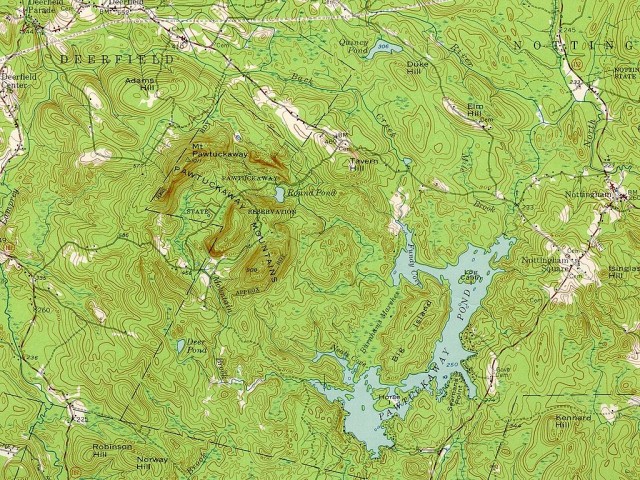
Any of you climbers out there might have spent time out in the Boulder Field in the western part of the park. About 18,000 years ago (we’re really making some good time here) a huge glacier called the Laurentide Icesheet covered this entire region. It was a mile high and moved slowly along the land. At one point, while casually sliding along the top of North Mountain it picked up some of the rocks from the top–imagine a pebble getting caught in the tread of your shoe as you walk. As the glacier continued along it deposited these boulders just to the east creating the boulder field many of us enjoy today.
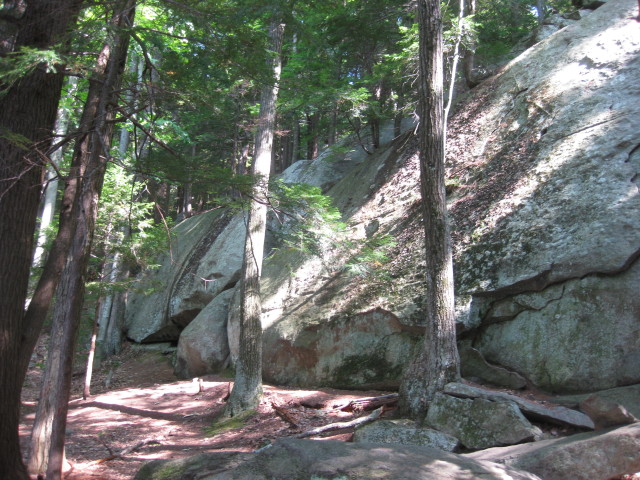
Most visitors of the park come to enjoy the lake. Pawtuckaway Lake is one of the premier places in Southeastern New Hampshire to paddle, get a tan, or fish (as far as I can tell, anyway). It’s 783 acres offer blueberries and islands aplenty, beautiful views of the Pawtuckaway Mountains, and a cool retreat from the summer heat, but this wasn’t always so. Two hundred years ago this body of water was a much smaller pond. Expansion began in 1836 when two dams were built to provide hydropower to the Newmarket Manufacturing Company.
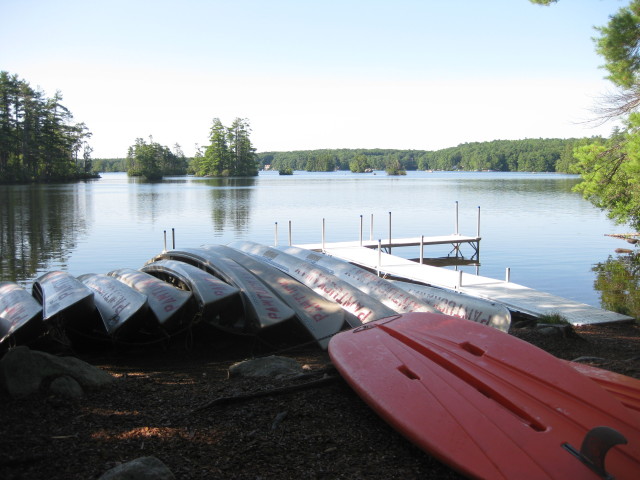
The evidence? If you take a boat out on the lake you might notice that parts of it, even in the very middle, are quite shallow. Most of the lake was flooded land, so I like to imagine the terrestrial wildlife that may have once walked along those shallow spots.
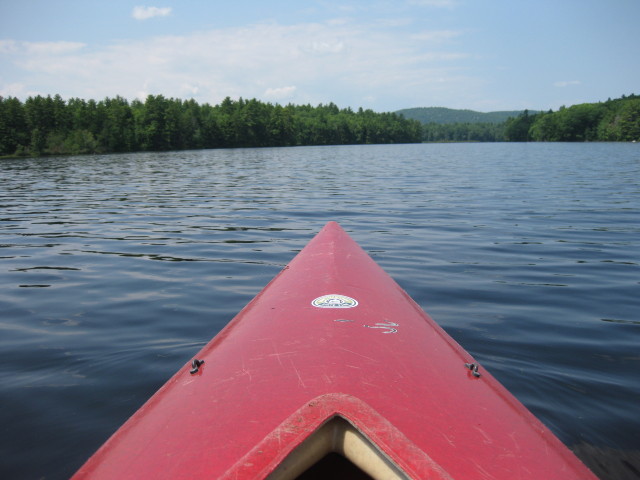
Before European settlers came over to the area the Pennacook, a local division of the Algonquin Natives, referred to this land as one of “sticks and stones.” For the hunter gatherer culture it was still a bountiful land (Pawtuckaway means “land of the big buck” in the Algonquin language, after all), however the Pennacook knew that the settlers would have difficulty cultivating this land. Nonetheless, Europeans built their homesteads, worked to clear the land, and tried as best they could to farm the area. The story is in the abandoned stonewalls and the trees left in our forests. Generations of settlers spent not quite 200 years trying to make this land profitable to farm, but once westward movement began in the late 1800s, the people cleared out…The Pennacook were right.
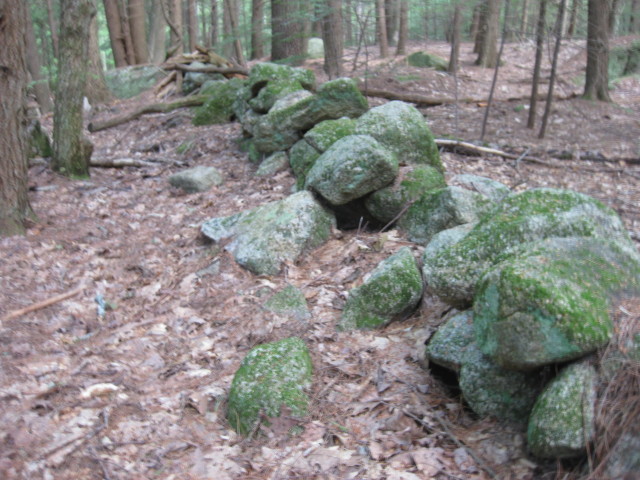
Need more evidence? Most of the trees in the park (and throughout much of New England) are in fact no older than 80 to 90 years old. People were gone and logging operations became more conservative around the 1930s, which allowed the forests to reclaim the land. Sprinkled throughout the forest we can see older trees lining the edges of stone walls that were likely once part of pastures. While in these woodlands, trees like white pines make a straight shot up to the top of the canopy to compete for sunlight, but we can see that some of these larger trees were able to spread out towards the top. Without any other trees around them these pasture trees were able to spend energy spreading out, absorbing sunlight in a wide canopy, and shading the ground to compete against other sprouting trees.
No matter how you spend your time at Pawtuckaway, remember there is a fascinating history behind all the ways you choose to enjoy the park. If you would like to learn more and see some of these sights for yourself join me on Saturday, September 27 for a special interpretive program, Tucked Away in Pawtuckaway. (Meet at 11AM at the Mountain Trail trailhead.) We’ll explore and celebrate my personal favorite public land in the state of New Hampshire. See you soon and thanks for taking this journey through time with me!
By: Lauren Bos, Interpretive Ranger at Pawtuckaway State Park

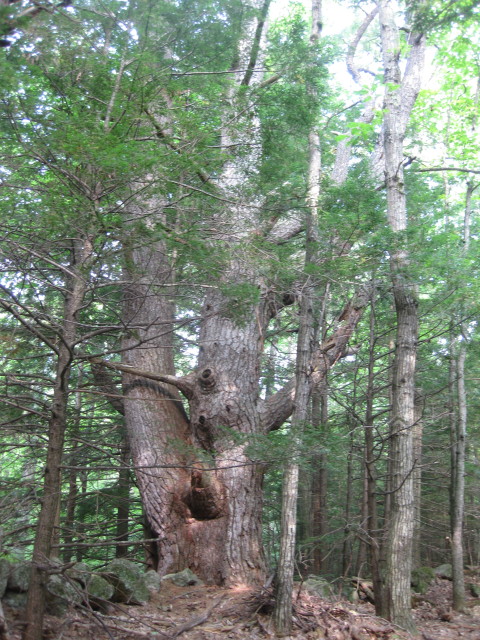
Nice overview to a pretty cool park, Lauren. Quick question about your Tucked Away program: Is the Mountain Trail trailhead the one near the park entrance or the one on Tower Road?
Park entrance if you’re still wondering!
I am interested in the history of the cemetery on Reservation Road.